Favorites
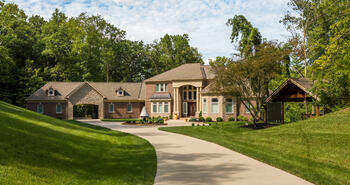
Plymouth
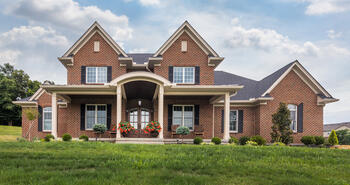
Marquette
Request Appointment
Request an Appointment
Status message
Debug: Image path is empty. in Drupal\twig_tweak\TwigTweakExtension::imageStyleFilter() (line 500 of modules/contrib/twig_tweak/src/TwigTweakExtension.php).
Drupal\twig_tweak\TwigTweakExtension::imageStyleFilter() (Line: 52) __TwigTemplate_db555a9a17eb891bb3880b2f7ae431d1->doDisplay() (Line: 388) Twig\Template->yield() (Line: 153) __TwigTemplate_fcd8bc630c126c6c857e5e50377a9702___1504845686->doDisplay() (Line: 388) Twig\Template->yield() (Line: 52) __TwigTemplate_fcd8bc630c126c6c857e5e50377a9702->doDisplay() (Line: 388) Twig\Template->yield() (Line: 344) Twig\Template->display() (Line: 359) Twig\Template->render() (Line: 51) Twig\TemplateWrapper->render() (Line: 33) twig_render_template() (Line: 348) Drupal\Core\Theme\ThemeManager->render() (Line: 490) Drupal\Core\Render\Renderer->doRender() (Line: 248) Drupal\Core\Render\Renderer->render() (Line: 1204) Drupal\views\Plugin\views\field\FieldPluginBase->advancedRender() (Line: 238) template_preprocess_views_view_field() call_user_func_array() (Line: 261) Drupal\Core\Theme\ThemeManager->render() (Line: 490) Drupal\Core\Render\Renderer->doRender() (Line: 248) Drupal\Core\Render\Renderer->render() (Line: 1796) Drupal\views\Plugin\views\field\FieldPluginBase->theme() (Line: 769) Drupal\views\Plugin\views\style\StylePluginBase->elementPreRenderRow() call_user_func_array() (Line: 113) Drupal\Core\Render\Renderer->doTrustedCallback() (Line: 886) Drupal\Core\Render\Renderer->doCallback() (Line: 431) Drupal\Core\Render\Renderer->doRender() (Line: 248) Drupal\Core\Render\Renderer->render() (Line: 708) Drupal\views\Plugin\views\style\StylePluginBase->renderFields() (Line: 574) Drupal\views\Plugin\views\style\StylePluginBase->renderGrouping() (Line: 462) Drupal\views\Plugin\views\style\StylePluginBase->render() (Line: 2177) Drupal\views\Plugin\views\display\DisplayPluginBase->render() (Line: 1593) Drupal\views\ViewExecutable->render() (Line: 201) Drupal\views\Plugin\views\display\Page->execute() (Line: 1690) Drupal\views\ViewExecutable->executeDisplay() (Line: 81) Drupal\views\Element\View::preRenderViewElement() call_user_func_array() (Line: 113) Drupal\Core\Render\Renderer->doTrustedCallback() (Line: 886) Drupal\Core\Render\Renderer->doCallback() (Line: 431) Drupal\Core\Render\Renderer->doRender() (Line: 503) Drupal\Core\Render\Renderer->doRender() (Line: 248) Drupal\Core\Render\Renderer->render() (Line: 484) Drupal\Core\Template\TwigExtension->escapeFilter() (Line: 84) __TwigTemplate_2a4c8a9ffb1cb6725eb02fe44c1be2c5->doDisplay() (Line: 388) Twig\Template->yield() (Line: 344) Twig\Template->display() (Line: 359) Twig\Template->render() (Line: 51) Twig\TemplateWrapper->render() (Line: 33) twig_render_template() (Line: 348) Drupal\Core\Theme\ThemeManager->render() (Line: 490) Drupal\Core\Render\Renderer->doRender() (Line: 503) Drupal\Core\Render\Renderer->doRender() (Line: 248) Drupal\Core\Render\Renderer->render() (Line: 484) Drupal\Core\Template\TwigExtension->escapeFilter() (Line: 84) __TwigTemplate_9c3c2a1af6d276f7f33934c8144418e5->block_content() (Line: 432) Twig\Template->yieldBlock() (Line: 68) __TwigTemplate_9c3c2a1af6d276f7f33934c8144418e5->block_paragraph() (Line: 432) Twig\Template->yieldBlock() (Line: 51) __TwigTemplate_9c3c2a1af6d276f7f33934c8144418e5->doDisplay() (Line: 388) Twig\Template->yield() (Line: 344) Twig\Template->display() (Line: 359) Twig\Template->render() (Line: 51) Twig\TemplateWrapper->render() (Line: 33) twig_render_template() (Line: 348) Drupal\Core\Theme\ThemeManager->render() (Line: 490) Drupal\Core\Render\Renderer->doRender() (Line: 248) Drupal\Core\Render\Renderer->render() (Line: 484) Drupal\Core\Template\TwigExtension->escapeFilter() (Line: 64) __TwigTemplate_2a4c8a9ffb1cb6725eb02fe44c1be2c5->doDisplay() (Line: 388) Twig\Template->yield() (Line: 344) Twig\Template->display() (Line: 359) Twig\Template->render() (Line: 51) Twig\TemplateWrapper->render() (Line: 33) twig_render_template() (Line: 348) Drupal\Core\Theme\ThemeManager->render() (Line: 490) Drupal\Core\Render\Renderer->doRender() (Line: 503) Drupal\Core\Render\Renderer->doRender() (Line: 248) Drupal\Core\Render\Renderer->render() (Line: 484) Drupal\Core\Template\TwigExtension->escapeFilter() (Line: 105) __TwigTemplate_3ea76e43097b2ace5204b31bb4eb335a->doDisplay() (Line: 388) Twig\Template->yield() (Line: 344) Twig\Template->display() (Line: 359) Twig\Template->render() (Line: 51) Twig\TemplateWrapper->render() (Line: 33) twig_render_template() (Line: 348) Drupal\Core\Theme\ThemeManager->render() (Line: 490) Drupal\Core\Render\Renderer->doRender() (Line: 248) Drupal\Core\Render\Renderer->render() (Line: 238) Drupal\Core\Render\MainContent\HtmlRenderer->Drupal\Core\Render\MainContent\{closure}() (Line: 637) Drupal\Core\Render\Renderer->executeInRenderContext() (Line: 231) Drupal\Core\Render\MainContent\HtmlRenderer->prepare() (Line: 128) Drupal\Core\Render\MainContent\HtmlRenderer->renderResponse() (Line: 90) Drupal\Core\EventSubscriber\MainContentViewSubscriber->onViewRenderArray() call_user_func() (Line: 111) Drupal\Component\EventDispatcher\ContainerAwareEventDispatcher->dispatch() (Line: 186) Symfony\Component\HttpKernel\HttpKernel->handleRaw() (Line: 76) Symfony\Component\HttpKernel\HttpKernel->handle() (Line: 53) Drupal\Core\StackMiddleware\Session->handle() (Line: 48) Drupal\Core\StackMiddleware\KernelPreHandle->handle() (Line: 28) Drupal\Core\StackMiddleware\ContentLength->handle() (Line: 32) Drupal\big_pipe\StackMiddleware\ContentLength->handle() (Line: 201) Drupal\page_cache\StackMiddleware\PageCache->fetch() (Line: 138) Drupal\page_cache\StackMiddleware\PageCache->lookup() (Line: 87) Drupal\page_cache\StackMiddleware\PageCache->handle() (Line: 48) Drupal\Core\StackMiddleware\ReverseProxyMiddleware->handle() (Line: 51) Drupal\Core\StackMiddleware\NegotiationMiddleware->handle() (Line: 36) Drupal\Core\StackMiddleware\AjaxPageState->handle() (Line: 51) Drupal\Core\StackMiddleware\StackedHttpKernel->handle() (Line: 741) Drupal\Core\DrupalKernel->handle() (Line: 19)Debug: Image path is empty. in Drupal\twig_tweak\TwigTweakExtension::imageStyleFilter() (line 500 of modules/contrib/twig_tweak/src/TwigTweakExtension.php).
Drupal\twig_tweak\TwigTweakExtension::imageStyleFilter() (Line: 52) __TwigTemplate_db555a9a17eb891bb3880b2f7ae431d1->doDisplay() (Line: 388) Twig\Template->yield() (Line: 153) __TwigTemplate_fcd8bc630c126c6c857e5e50377a9702___1504845686->doDisplay() (Line: 388) Twig\Template->yield() (Line: 52) __TwigTemplate_fcd8bc630c126c6c857e5e50377a9702->doDisplay() (Line: 388) Twig\Template->yield() (Line: 344) Twig\Template->display() (Line: 359) Twig\Template->render() (Line: 51) Twig\TemplateWrapper->render() (Line: 33) twig_render_template() (Line: 348) Drupal\Core\Theme\ThemeManager->render() (Line: 490) Drupal\Core\Render\Renderer->doRender() (Line: 248) Drupal\Core\Render\Renderer->render() (Line: 1204) Drupal\views\Plugin\views\field\FieldPluginBase->advancedRender() (Line: 238) template_preprocess_views_view_field() call_user_func_array() (Line: 261) Drupal\Core\Theme\ThemeManager->render() (Line: 490) Drupal\Core\Render\Renderer->doRender() (Line: 248) Drupal\Core\Render\Renderer->render() (Line: 1796) Drupal\views\Plugin\views\field\FieldPluginBase->theme() (Line: 769) Drupal\views\Plugin\views\style\StylePluginBase->elementPreRenderRow() call_user_func_array() (Line: 113) Drupal\Core\Render\Renderer->doTrustedCallback() (Line: 886) Drupal\Core\Render\Renderer->doCallback() (Line: 431) Drupal\Core\Render\Renderer->doRender() (Line: 248) Drupal\Core\Render\Renderer->render() (Line: 708) Drupal\views\Plugin\views\style\StylePluginBase->renderFields() (Line: 574) Drupal\views\Plugin\views\style\StylePluginBase->renderGrouping() (Line: 462) Drupal\views\Plugin\views\style\StylePluginBase->render() (Line: 2177) Drupal\views\Plugin\views\display\DisplayPluginBase->render() (Line: 1593) Drupal\views\ViewExecutable->render() (Line: 201) Drupal\views\Plugin\views\display\Page->execute() (Line: 1690) Drupal\views\ViewExecutable->executeDisplay() (Line: 81) Drupal\views\Element\View::preRenderViewElement() call_user_func_array() (Line: 113) Drupal\Core\Render\Renderer->doTrustedCallback() (Line: 886) Drupal\Core\Render\Renderer->doCallback() (Line: 431) Drupal\Core\Render\Renderer->doRender() (Line: 503) Drupal\Core\Render\Renderer->doRender() (Line: 248) Drupal\Core\Render\Renderer->render() (Line: 484) Drupal\Core\Template\TwigExtension->escapeFilter() (Line: 84) __TwigTemplate_2a4c8a9ffb1cb6725eb02fe44c1be2c5->doDisplay() (Line: 388) Twig\Template->yield() (Line: 344) Twig\Template->display() (Line: 359) Twig\Template->render() (Line: 51) Twig\TemplateWrapper->render() (Line: 33) twig_render_template() (Line: 348) Drupal\Core\Theme\ThemeManager->render() (Line: 490) Drupal\Core\Render\Renderer->doRender() (Line: 503) Drupal\Core\Render\Renderer->doRender() (Line: 248) Drupal\Core\Render\Renderer->render() (Line: 484) Drupal\Core\Template\TwigExtension->escapeFilter() (Line: 84) __TwigTemplate_9c3c2a1af6d276f7f33934c8144418e5->block_content() (Line: 432) Twig\Template->yieldBlock() (Line: 68) __TwigTemplate_9c3c2a1af6d276f7f33934c8144418e5->block_paragraph() (Line: 432) Twig\Template->yieldBlock() (Line: 51) __TwigTemplate_9c3c2a1af6d276f7f33934c8144418e5->doDisplay() (Line: 388) Twig\Template->yield() (Line: 344) Twig\Template->display() (Line: 359) Twig\Template->render() (Line: 51) Twig\TemplateWrapper->render() (Line: 33) twig_render_template() (Line: 348) Drupal\Core\Theme\ThemeManager->render() (Line: 490) Drupal\Core\Render\Renderer->doRender() (Line: 248) Drupal\Core\Render\Renderer->render() (Line: 484) Drupal\Core\Template\TwigExtension->escapeFilter() (Line: 64) __TwigTemplate_2a4c8a9ffb1cb6725eb02fe44c1be2c5->doDisplay() (Line: 388) Twig\Template->yield() (Line: 344) Twig\Template->display() (Line: 359) Twig\Template->render() (Line: 51) Twig\TemplateWrapper->render() (Line: 33) twig_render_template() (Line: 348) Drupal\Core\Theme\ThemeManager->render() (Line: 490) Drupal\Core\Render\Renderer->doRender() (Line: 503) Drupal\Core\Render\Renderer->doRender() (Line: 248) Drupal\Core\Render\Renderer->render() (Line: 484) Drupal\Core\Template\TwigExtension->escapeFilter() (Line: 105) __TwigTemplate_3ea76e43097b2ace5204b31bb4eb335a->doDisplay() (Line: 388) Twig\Template->yield() (Line: 344) Twig\Template->display() (Line: 359) Twig\Template->render() (Line: 51) Twig\TemplateWrapper->render() (Line: 33) twig_render_template() (Line: 348) Drupal\Core\Theme\ThemeManager->render() (Line: 490) Drupal\Core\Render\Renderer->doRender() (Line: 248) Drupal\Core\Render\Renderer->render() (Line: 238) Drupal\Core\Render\MainContent\HtmlRenderer->Drupal\Core\Render\MainContent\{closure}() (Line: 637) Drupal\Core\Render\Renderer->executeInRenderContext() (Line: 231) Drupal\Core\Render\MainContent\HtmlRenderer->prepare() (Line: 128) Drupal\Core\Render\MainContent\HtmlRenderer->renderResponse() (Line: 90) Drupal\Core\EventSubscriber\MainContentViewSubscriber->onViewRenderArray() call_user_func() (Line: 111) Drupal\Component\EventDispatcher\ContainerAwareEventDispatcher->dispatch() (Line: 186) Symfony\Component\HttpKernel\HttpKernel->handleRaw() (Line: 76) Symfony\Component\HttpKernel\HttpKernel->handle() (Line: 53) Drupal\Core\StackMiddleware\Session->handle() (Line: 48) Drupal\Core\StackMiddleware\KernelPreHandle->handle() (Line: 28) Drupal\Core\StackMiddleware\ContentLength->handle() (Line: 32) Drupal\big_pipe\StackMiddleware\ContentLength->handle() (Line: 201) Drupal\page_cache\StackMiddleware\PageCache->fetch() (Line: 138) Drupal\page_cache\StackMiddleware\PageCache->lookup() (Line: 87) Drupal\page_cache\StackMiddleware\PageCache->handle() (Line: 48) Drupal\Core\StackMiddleware\ReverseProxyMiddleware->handle() (Line: 51) Drupal\Core\StackMiddleware\NegotiationMiddleware->handle() (Line: 36) Drupal\Core\StackMiddleware\AjaxPageState->handle() (Line: 51) Drupal\Core\StackMiddleware\StackedHttpKernel->handle() (Line: 741) Drupal\Core\DrupalKernel->handle() (Line: 19)Debug: Image path is empty. in Drupal\twig_tweak\TwigTweakExtension::imageStyleFilter() (line 500 of modules/contrib/twig_tweak/src/TwigTweakExtension.php).
Drupal\twig_tweak\TwigTweakExtension::imageStyleFilter() (Line: 52) __TwigTemplate_db555a9a17eb891bb3880b2f7ae431d1->doDisplay() (Line: 388) Twig\Template->yield() (Line: 47) __TwigTemplate_a3dad23c3603564be2fdb4680fcc10c4->doDisplay() (Line: 388) Twig\Template->yield() (Line: 344) Twig\Template->display() (Line: 359) Twig\Template->render() (Line: 51) Twig\TemplateWrapper->render() (Line: 33) twig_render_template() (Line: 348) Drupal\Core\Theme\ThemeManager->render() (Line: 490) Drupal\Core\Render\Renderer->doRender() (Line: 248) Drupal\Core\Render\Renderer->render() (Line: 1204) Drupal\views\Plugin\views\field\FieldPluginBase->advancedRender() (Line: 238) template_preprocess_views_view_field() call_user_func_array() (Line: 261) Drupal\Core\Theme\ThemeManager->render() (Line: 490) Drupal\Core\Render\Renderer->doRender() (Line: 248) Drupal\Core\Render\Renderer->render() (Line: 1796) Drupal\views\Plugin\views\field\FieldPluginBase->theme() (Line: 769) Drupal\views\Plugin\views\style\StylePluginBase->elementPreRenderRow() call_user_func_array() (Line: 113) Drupal\Core\Render\Renderer->doTrustedCallback() (Line: 886) Drupal\Core\Render\Renderer->doCallback() (Line: 431) Drupal\Core\Render\Renderer->doRender() (Line: 248) Drupal\Core\Render\Renderer->render() (Line: 708) Drupal\views\Plugin\views\style\StylePluginBase->renderFields() (Line: 574) Drupal\views\Plugin\views\style\StylePluginBase->renderGrouping() (Line: 462) Drupal\views\Plugin\views\style\StylePluginBase->render() (Line: 2177) Drupal\views\Plugin\views\display\DisplayPluginBase->render() (Line: 1593) Drupal\views\ViewExecutable->render() (Line: 201) Drupal\views\Plugin\views\display\Page->execute() (Line: 1690) Drupal\views\ViewExecutable->executeDisplay() (Line: 81) Drupal\views\Element\View::preRenderViewElement() call_user_func_array() (Line: 113) Drupal\Core\Render\Renderer->doTrustedCallback() (Line: 886) Drupal\Core\Render\Renderer->doCallback() (Line: 431) Drupal\Core\Render\Renderer->doRender() (Line: 503) Drupal\Core\Render\Renderer->doRender() (Line: 248) Drupal\Core\Render\Renderer->render() (Line: 484) Drupal\Core\Template\TwigExtension->escapeFilter() (Line: 84) __TwigTemplate_2a4c8a9ffb1cb6725eb02fe44c1be2c5->doDisplay() (Line: 388) Twig\Template->yield() (Line: 344) Twig\Template->display() (Line: 359) Twig\Template->render() (Line: 51) Twig\TemplateWrapper->render() (Line: 33) twig_render_template() (Line: 348) Drupal\Core\Theme\ThemeManager->render() (Line: 490) Drupal\Core\Render\Renderer->doRender() (Line: 503) Drupal\Core\Render\Renderer->doRender() (Line: 248) Drupal\Core\Render\Renderer->render() (Line: 484) Drupal\Core\Template\TwigExtension->escapeFilter() (Line: 84) __TwigTemplate_9c3c2a1af6d276f7f33934c8144418e5->block_content() (Line: 432) Twig\Template->yieldBlock() (Line: 68) __TwigTemplate_9c3c2a1af6d276f7f33934c8144418e5->block_paragraph() (Line: 432) Twig\Template->yieldBlock() (Line: 51) __TwigTemplate_9c3c2a1af6d276f7f33934c8144418e5->doDisplay() (Line: 388) Twig\Template->yield() (Line: 344) Twig\Template->display() (Line: 359) Twig\Template->render() (Line: 51) Twig\TemplateWrapper->render() (Line: 33) twig_render_template() (Line: 348) Drupal\Core\Theme\ThemeManager->render() (Line: 490) Drupal\Core\Render\Renderer->doRender() (Line: 248) Drupal\Core\Render\Renderer->render() (Line: 484) Drupal\Core\Template\TwigExtension->escapeFilter() (Line: 64) __TwigTemplate_2a4c8a9ffb1cb6725eb02fe44c1be2c5->doDisplay() (Line: 388) Twig\Template->yield() (Line: 344) Twig\Template->display() (Line: 359) Twig\Template->render() (Line: 51) Twig\TemplateWrapper->render() (Line: 33) twig_render_template() (Line: 348) Drupal\Core\Theme\ThemeManager->render() (Line: 490) Drupal\Core\Render\Renderer->doRender() (Line: 503) Drupal\Core\Render\Renderer->doRender() (Line: 248) Drupal\Core\Render\Renderer->render() (Line: 484) Drupal\Core\Template\TwigExtension->escapeFilter() (Line: 105) __TwigTemplate_3ea76e43097b2ace5204b31bb4eb335a->doDisplay() (Line: 388) Twig\Template->yield() (Line: 344) Twig\Template->display() (Line: 359) Twig\Template->render() (Line: 51) Twig\TemplateWrapper->render() (Line: 33) twig_render_template() (Line: 348) Drupal\Core\Theme\ThemeManager->render() (Line: 490) Drupal\Core\Render\Renderer->doRender() (Line: 248) Drupal\Core\Render\Renderer->render() (Line: 238) Drupal\Core\Render\MainContent\HtmlRenderer->Drupal\Core\Render\MainContent\{closure}() (Line: 637) Drupal\Core\Render\Renderer->executeInRenderContext() (Line: 231) Drupal\Core\Render\MainContent\HtmlRenderer->prepare() (Line: 128) Drupal\Core\Render\MainContent\HtmlRenderer->renderResponse() (Line: 90) Drupal\Core\EventSubscriber\MainContentViewSubscriber->onViewRenderArray() call_user_func() (Line: 111) Drupal\Component\EventDispatcher\ContainerAwareEventDispatcher->dispatch() (Line: 186) Symfony\Component\HttpKernel\HttpKernel->handleRaw() (Line: 76) Symfony\Component\HttpKernel\HttpKernel->handle() (Line: 53) Drupal\Core\StackMiddleware\Session->handle() (Line: 48) Drupal\Core\StackMiddleware\KernelPreHandle->handle() (Line: 28) Drupal\Core\StackMiddleware\ContentLength->handle() (Line: 32) Drupal\big_pipe\StackMiddleware\ContentLength->handle() (Line: 201) Drupal\page_cache\StackMiddleware\PageCache->fetch() (Line: 138) Drupal\page_cache\StackMiddleware\PageCache->lookup() (Line: 87) Drupal\page_cache\StackMiddleware\PageCache->handle() (Line: 48) Drupal\Core\StackMiddleware\ReverseProxyMiddleware->handle() (Line: 51) Drupal\Core\StackMiddleware\NegotiationMiddleware->handle() (Line: 36) Drupal\Core\StackMiddleware\AjaxPageState->handle() (Line: 51) Drupal\Core\StackMiddleware\StackedHttpKernel->handle() (Line: 741) Drupal\Core\DrupalKernel->handle() (Line: 19)Debug: Image path is empty. in Drupal\twig_tweak\TwigTweakExtension::imageStyleFilter() (line 500 of modules/contrib/twig_tweak/src/TwigTweakExtension.php).
Drupal\twig_tweak\TwigTweakExtension::imageStyleFilter() (Line: 52) __TwigTemplate_db555a9a17eb891bb3880b2f7ae431d1->doDisplay() (Line: 388) Twig\Template->yield() (Line: 47) __TwigTemplate_a3dad23c3603564be2fdb4680fcc10c4->doDisplay() (Line: 388) Twig\Template->yield() (Line: 344) Twig\Template->display() (Line: 359) Twig\Template->render() (Line: 51) Twig\TemplateWrapper->render() (Line: 33) twig_render_template() (Line: 348) Drupal\Core\Theme\ThemeManager->render() (Line: 490) Drupal\Core\Render\Renderer->doRender() (Line: 248) Drupal\Core\Render\Renderer->render() (Line: 1204) Drupal\views\Plugin\views\field\FieldPluginBase->advancedRender() (Line: 238) template_preprocess_views_view_field() call_user_func_array() (Line: 261) Drupal\Core\Theme\ThemeManager->render() (Line: 490) Drupal\Core\Render\Renderer->doRender() (Line: 248) Drupal\Core\Render\Renderer->render() (Line: 1796) Drupal\views\Plugin\views\field\FieldPluginBase->theme() (Line: 769) Drupal\views\Plugin\views\style\StylePluginBase->elementPreRenderRow() call_user_func_array() (Line: 113) Drupal\Core\Render\Renderer->doTrustedCallback() (Line: 886) Drupal\Core\Render\Renderer->doCallback() (Line: 431) Drupal\Core\Render\Renderer->doRender() (Line: 248) Drupal\Core\Render\Renderer->render() (Line: 708) Drupal\views\Plugin\views\style\StylePluginBase->renderFields() (Line: 574) Drupal\views\Plugin\views\style\StylePluginBase->renderGrouping() (Line: 462) Drupal\views\Plugin\views\style\StylePluginBase->render() (Line: 2177) Drupal\views\Plugin\views\display\DisplayPluginBase->render() (Line: 1593) Drupal\views\ViewExecutable->render() (Line: 201) Drupal\views\Plugin\views\display\Page->execute() (Line: 1690) Drupal\views\ViewExecutable->executeDisplay() (Line: 81) Drupal\views\Element\View::preRenderViewElement() call_user_func_array() (Line: 113) Drupal\Core\Render\Renderer->doTrustedCallback() (Line: 886) Drupal\Core\Render\Renderer->doCallback() (Line: 431) Drupal\Core\Render\Renderer->doRender() (Line: 503) Drupal\Core\Render\Renderer->doRender() (Line: 248) Drupal\Core\Render\Renderer->render() (Line: 484) Drupal\Core\Template\TwigExtension->escapeFilter() (Line: 84) __TwigTemplate_2a4c8a9ffb1cb6725eb02fe44c1be2c5->doDisplay() (Line: 388) Twig\Template->yield() (Line: 344) Twig\Template->display() (Line: 359) Twig\Template->render() (Line: 51) Twig\TemplateWrapper->render() (Line: 33) twig_render_template() (Line: 348) Drupal\Core\Theme\ThemeManager->render() (Line: 490) Drupal\Core\Render\Renderer->doRender() (Line: 503) Drupal\Core\Render\Renderer->doRender() (Line: 248) Drupal\Core\Render\Renderer->render() (Line: 484) Drupal\Core\Template\TwigExtension->escapeFilter() (Line: 84) __TwigTemplate_9c3c2a1af6d276f7f33934c8144418e5->block_content() (Line: 432) Twig\Template->yieldBlock() (Line: 68) __TwigTemplate_9c3c2a1af6d276f7f33934c8144418e5->block_paragraph() (Line: 432) Twig\Template->yieldBlock() (Line: 51) __TwigTemplate_9c3c2a1af6d276f7f33934c8144418e5->doDisplay() (Line: 388) Twig\Template->yield() (Line: 344) Twig\Template->display() (Line: 359) Twig\Template->render() (Line: 51) Twig\TemplateWrapper->render() (Line: 33) twig_render_template() (Line: 348) Drupal\Core\Theme\ThemeManager->render() (Line: 490) Drupal\Core\Render\Renderer->doRender() (Line: 248) Drupal\Core\Render\Renderer->render() (Line: 484) Drupal\Core\Template\TwigExtension->escapeFilter() (Line: 64) __TwigTemplate_2a4c8a9ffb1cb6725eb02fe44c1be2c5->doDisplay() (Line: 388) Twig\Template->yield() (Line: 344) Twig\Template->display() (Line: 359) Twig\Template->render() (Line: 51) Twig\TemplateWrapper->render() (Line: 33) twig_render_template() (Line: 348) Drupal\Core\Theme\ThemeManager->render() (Line: 490) Drupal\Core\Render\Renderer->doRender() (Line: 503) Drupal\Core\Render\Renderer->doRender() (Line: 248) Drupal\Core\Render\Renderer->render() (Line: 484) Drupal\Core\Template\TwigExtension->escapeFilter() (Line: 105) __TwigTemplate_3ea76e43097b2ace5204b31bb4eb335a->doDisplay() (Line: 388) Twig\Template->yield() (Line: 344) Twig\Template->display() (Line: 359) Twig\Template->render() (Line: 51) Twig\TemplateWrapper->render() (Line: 33) twig_render_template() (Line: 348) Drupal\Core\Theme\ThemeManager->render() (Line: 490) Drupal\Core\Render\Renderer->doRender() (Line: 248) Drupal\Core\Render\Renderer->render() (Line: 238) Drupal\Core\Render\MainContent\HtmlRenderer->Drupal\Core\Render\MainContent\{closure}() (Line: 637) Drupal\Core\Render\Renderer->executeInRenderContext() (Line: 231) Drupal\Core\Render\MainContent\HtmlRenderer->prepare() (Line: 128) Drupal\Core\Render\MainContent\HtmlRenderer->renderResponse() (Line: 90) Drupal\Core\EventSubscriber\MainContentViewSubscriber->onViewRenderArray() call_user_func() (Line: 111) Drupal\Component\EventDispatcher\ContainerAwareEventDispatcher->dispatch() (Line: 186) Symfony\Component\HttpKernel\HttpKernel->handleRaw() (Line: 76) Symfony\Component\HttpKernel\HttpKernel->handle() (Line: 53) Drupal\Core\StackMiddleware\Session->handle() (Line: 48) Drupal\Core\StackMiddleware\KernelPreHandle->handle() (Line: 28) Drupal\Core\StackMiddleware\ContentLength->handle() (Line: 32) Drupal\big_pipe\StackMiddleware\ContentLength->handle() (Line: 201) Drupal\page_cache\StackMiddleware\PageCache->fetch() (Line: 138) Drupal\page_cache\StackMiddleware\PageCache->lookup() (Line: 87) Drupal\page_cache\StackMiddleware\PageCache->handle() (Line: 48) Drupal\Core\StackMiddleware\ReverseProxyMiddleware->handle() (Line: 51) Drupal\Core\StackMiddleware\NegotiationMiddleware->handle() (Line: 36) Drupal\Core\StackMiddleware\AjaxPageState->handle() (Line: 51) Drupal\Core\StackMiddleware\StackedHttpKernel->handle() (Line: 741) Drupal\Core\DrupalKernel->handle() (Line: 19)Debug: Image path is empty. in Drupal\twig_tweak\TwigTweakExtension::imageStyleFilter() (line 500 of modules/contrib/twig_tweak/src/TwigTweakExtension.php).
Drupal\twig_tweak\TwigTweakExtension::imageStyleFilter() (Line: 52) __TwigTemplate_db555a9a17eb891bb3880b2f7ae431d1->doDisplay() (Line: 388) Twig\Template->yield() (Line: 47) __TwigTemplate_a3dad23c3603564be2fdb4680fcc10c4->doDisplay() (Line: 388) Twig\Template->yield() (Line: 344) Twig\Template->display() (Line: 359) Twig\Template->render() (Line: 51) Twig\TemplateWrapper->render() (Line: 33) twig_render_template() (Line: 348) Drupal\Core\Theme\ThemeManager->render() (Line: 490) Drupal\Core\Render\Renderer->doRender() (Line: 248) Drupal\Core\Render\Renderer->render() (Line: 1204) Drupal\views\Plugin\views\field\FieldPluginBase->advancedRender() (Line: 238) template_preprocess_views_view_field() call_user_func_array() (Line: 261) Drupal\Core\Theme\ThemeManager->render() (Line: 490) Drupal\Core\Render\Renderer->doRender() (Line: 248) Drupal\Core\Render\Renderer->render() (Line: 1796) Drupal\views\Plugin\views\field\FieldPluginBase->theme() (Line: 769) Drupal\views\Plugin\views\style\StylePluginBase->elementPreRenderRow() call_user_func_array() (Line: 113) Drupal\Core\Render\Renderer->doTrustedCallback() (Line: 886) Drupal\Core\Render\Renderer->doCallback() (Line: 431) Drupal\Core\Render\Renderer->doRender() (Line: 248) Drupal\Core\Render\Renderer->render() (Line: 708) Drupal\views\Plugin\views\style\StylePluginBase->renderFields() (Line: 574) Drupal\views\Plugin\views\style\StylePluginBase->renderGrouping() (Line: 462) Drupal\views\Plugin\views\style\StylePluginBase->render() (Line: 2177) Drupal\views\Plugin\views\display\DisplayPluginBase->render() (Line: 1593) Drupal\views\ViewExecutable->render() (Line: 201) Drupal\views\Plugin\views\display\Page->execute() (Line: 1690) Drupal\views\ViewExecutable->executeDisplay() (Line: 81) Drupal\views\Element\View::preRenderViewElement() call_user_func_array() (Line: 113) Drupal\Core\Render\Renderer->doTrustedCallback() (Line: 886) Drupal\Core\Render\Renderer->doCallback() (Line: 431) Drupal\Core\Render\Renderer->doRender() (Line: 503) Drupal\Core\Render\Renderer->doRender() (Line: 248) Drupal\Core\Render\Renderer->render() (Line: 484) Drupal\Core\Template\TwigExtension->escapeFilter() (Line: 84) __TwigTemplate_2a4c8a9ffb1cb6725eb02fe44c1be2c5->doDisplay() (Line: 388) Twig\Template->yield() (Line: 344) Twig\Template->display() (Line: 359) Twig\Template->render() (Line: 51) Twig\TemplateWrapper->render() (Line: 33) twig_render_template() (Line: 348) Drupal\Core\Theme\ThemeManager->render() (Line: 490) Drupal\Core\Render\Renderer->doRender() (Line: 503) Drupal\Core\Render\Renderer->doRender() (Line: 248) Drupal\Core\Render\Renderer->render() (Line: 484) Drupal\Core\Template\TwigExtension->escapeFilter() (Line: 84) __TwigTemplate_9c3c2a1af6d276f7f33934c8144418e5->block_content() (Line: 432) Twig\Template->yieldBlock() (Line: 68) __TwigTemplate_9c3c2a1af6d276f7f33934c8144418e5->block_paragraph() (Line: 432) Twig\Template->yieldBlock() (Line: 51) __TwigTemplate_9c3c2a1af6d276f7f33934c8144418e5->doDisplay() (Line: 388) Twig\Template->yield() (Line: 344) Twig\Template->display() (Line: 359) Twig\Template->render() (Line: 51) Twig\TemplateWrapper->render() (Line: 33) twig_render_template() (Line: 348) Drupal\Core\Theme\ThemeManager->render() (Line: 490) Drupal\Core\Render\Renderer->doRender() (Line: 248) Drupal\Core\Render\Renderer->render() (Line: 484) Drupal\Core\Template\TwigExtension->escapeFilter() (Line: 64) __TwigTemplate_2a4c8a9ffb1cb6725eb02fe44c1be2c5->doDisplay() (Line: 388) Twig\Template->yield() (Line: 344) Twig\Template->display() (Line: 359) Twig\Template->render() (Line: 51) Twig\TemplateWrapper->render() (Line: 33) twig_render_template() (Line: 348) Drupal\Core\Theme\ThemeManager->render() (Line: 490) Drupal\Core\Render\Renderer->doRender() (Line: 503) Drupal\Core\Render\Renderer->doRender() (Line: 248) Drupal\Core\Render\Renderer->render() (Line: 484) Drupal\Core\Template\TwigExtension->escapeFilter() (Line: 105) __TwigTemplate_3ea76e43097b2ace5204b31bb4eb335a->doDisplay() (Line: 388) Twig\Template->yield() (Line: 344) Twig\Template->display() (Line: 359) Twig\Template->render() (Line: 51) Twig\TemplateWrapper->render() (Line: 33) twig_render_template() (Line: 348) Drupal\Core\Theme\ThemeManager->render() (Line: 490) Drupal\Core\Render\Renderer->doRender() (Line: 248) Drupal\Core\Render\Renderer->render() (Line: 238) Drupal\Core\Render\MainContent\HtmlRenderer->Drupal\Core\Render\MainContent\{closure}() (Line: 637) Drupal\Core\Render\Renderer->executeInRenderContext() (Line: 231) Drupal\Core\Render\MainContent\HtmlRenderer->prepare() (Line: 128) Drupal\Core\Render\MainContent\HtmlRenderer->renderResponse() (Line: 90) Drupal\Core\EventSubscriber\MainContentViewSubscriber->onViewRenderArray() call_user_func() (Line: 111) Drupal\Component\EventDispatcher\ContainerAwareEventDispatcher->dispatch() (Line: 186) Symfony\Component\HttpKernel\HttpKernel->handleRaw() (Line: 76) Symfony\Component\HttpKernel\HttpKernel->handle() (Line: 53) Drupal\Core\StackMiddleware\Session->handle() (Line: 48) Drupal\Core\StackMiddleware\KernelPreHandle->handle() (Line: 28) Drupal\Core\StackMiddleware\ContentLength->handle() (Line: 32) Drupal\big_pipe\StackMiddleware\ContentLength->handle() (Line: 201) Drupal\page_cache\StackMiddleware\PageCache->fetch() (Line: 138) Drupal\page_cache\StackMiddleware\PageCache->lookup() (Line: 87) Drupal\page_cache\StackMiddleware\PageCache->handle() (Line: 48) Drupal\Core\StackMiddleware\ReverseProxyMiddleware->handle() (Line: 51) Drupal\Core\StackMiddleware\NegotiationMiddleware->handle() (Line: 36) Drupal\Core\StackMiddleware\AjaxPageState->handle() (Line: 51) Drupal\Core\StackMiddleware\StackedHttpKernel->handle() (Line: 741) Drupal\Core\DrupalKernel->handle() (Line: 19)Debug: Image path is empty. in Drupal\twig_tweak\TwigTweakExtension::imageStyleFilter() (line 500 of modules/contrib/twig_tweak/src/TwigTweakExtension.php).
Drupal\twig_tweak\TwigTweakExtension::imageStyleFilter() (Line: 52) __TwigTemplate_db555a9a17eb891bb3880b2f7ae431d1->doDisplay() (Line: 388) Twig\Template->yield() (Line: 47) __TwigTemplate_a3dad23c3603564be2fdb4680fcc10c4->doDisplay() (Line: 388) Twig\Template->yield() (Line: 344) Twig\Template->display() (Line: 359) Twig\Template->render() (Line: 51) Twig\TemplateWrapper->render() (Line: 33) twig_render_template() (Line: 348) Drupal\Core\Theme\ThemeManager->render() (Line: 490) Drupal\Core\Render\Renderer->doRender() (Line: 248) Drupal\Core\Render\Renderer->render() (Line: 1204) Drupal\views\Plugin\views\field\FieldPluginBase->advancedRender() (Line: 238) template_preprocess_views_view_field() call_user_func_array() (Line: 261) Drupal\Core\Theme\ThemeManager->render() (Line: 490) Drupal\Core\Render\Renderer->doRender() (Line: 248) Drupal\Core\Render\Renderer->render() (Line: 1796) Drupal\views\Plugin\views\field\FieldPluginBase->theme() (Line: 769) Drupal\views\Plugin\views\style\StylePluginBase->elementPreRenderRow() call_user_func_array() (Line: 113) Drupal\Core\Render\Renderer->doTrustedCallback() (Line: 886) Drupal\Core\Render\Renderer->doCallback() (Line: 431) Drupal\Core\Render\Renderer->doRender() (Line: 248) Drupal\Core\Render\Renderer->render() (Line: 708) Drupal\views\Plugin\views\style\StylePluginBase->renderFields() (Line: 574) Drupal\views\Plugin\views\style\StylePluginBase->renderGrouping() (Line: 462) Drupal\views\Plugin\views\style\StylePluginBase->render() (Line: 2177) Drupal\views\Plugin\views\display\DisplayPluginBase->render() (Line: 1593) Drupal\views\ViewExecutable->render() (Line: 201) Drupal\views\Plugin\views\display\Page->execute() (Line: 1690) Drupal\views\ViewExecutable->executeDisplay() (Line: 81) Drupal\views\Element\View::preRenderViewElement() call_user_func_array() (Line: 113) Drupal\Core\Render\Renderer->doTrustedCallback() (Line: 886) Drupal\Core\Render\Renderer->doCallback() (Line: 431) Drupal\Core\Render\Renderer->doRender() (Line: 503) Drupal\Core\Render\Renderer->doRender() (Line: 248) Drupal\Core\Render\Renderer->render() (Line: 484) Drupal\Core\Template\TwigExtension->escapeFilter() (Line: 84) __TwigTemplate_2a4c8a9ffb1cb6725eb02fe44c1be2c5->doDisplay() (Line: 388) Twig\Template->yield() (Line: 344) Twig\Template->display() (Line: 359) Twig\Template->render() (Line: 51) Twig\TemplateWrapper->render() (Line: 33) twig_render_template() (Line: 348) Drupal\Core\Theme\ThemeManager->render() (Line: 490) Drupal\Core\Render\Renderer->doRender() (Line: 503) Drupal\Core\Render\Renderer->doRender() (Line: 248) Drupal\Core\Render\Renderer->render() (Line: 484) Drupal\Core\Template\TwigExtension->escapeFilter() (Line: 84) __TwigTemplate_9c3c2a1af6d276f7f33934c8144418e5->block_content() (Line: 432) Twig\Template->yieldBlock() (Line: 68) __TwigTemplate_9c3c2a1af6d276f7f33934c8144418e5->block_paragraph() (Line: 432) Twig\Template->yieldBlock() (Line: 51) __TwigTemplate_9c3c2a1af6d276f7f33934c8144418e5->doDisplay() (Line: 388) Twig\Template->yield() (Line: 344) Twig\Template->display() (Line: 359) Twig\Template->render() (Line: 51) Twig\TemplateWrapper->render() (Line: 33) twig_render_template() (Line: 348) Drupal\Core\Theme\ThemeManager->render() (Line: 490) Drupal\Core\Render\Renderer->doRender() (Line: 248) Drupal\Core\Render\Renderer->render() (Line: 484) Drupal\Core\Template\TwigExtension->escapeFilter() (Line: 64) __TwigTemplate_2a4c8a9ffb1cb6725eb02fe44c1be2c5->doDisplay() (Line: 388) Twig\Template->yield() (Line: 344) Twig\Template->display() (Line: 359) Twig\Template->render() (Line: 51) Twig\TemplateWrapper->render() (Line: 33) twig_render_template() (Line: 348) Drupal\Core\Theme\ThemeManager->render() (Line: 490) Drupal\Core\Render\Renderer->doRender() (Line: 503) Drupal\Core\Render\Renderer->doRender() (Line: 248) Drupal\Core\Render\Renderer->render() (Line: 484) Drupal\Core\Template\TwigExtension->escapeFilter() (Line: 105) __TwigTemplate_3ea76e43097b2ace5204b31bb4eb335a->doDisplay() (Line: 388) Twig\Template->yield() (Line: 344) Twig\Template->display() (Line: 359) Twig\Template->render() (Line: 51) Twig\TemplateWrapper->render() (Line: 33) twig_render_template() (Line: 348) Drupal\Core\Theme\ThemeManager->render() (Line: 490) Drupal\Core\Render\Renderer->doRender() (Line: 248) Drupal\Core\Render\Renderer->render() (Line: 238) Drupal\Core\Render\MainContent\HtmlRenderer->Drupal\Core\Render\MainContent\{closure}() (Line: 637) Drupal\Core\Render\Renderer->executeInRenderContext() (Line: 231) Drupal\Core\Render\MainContent\HtmlRenderer->prepare() (Line: 128) Drupal\Core\Render\MainContent\HtmlRenderer->renderResponse() (Line: 90) Drupal\Core\EventSubscriber\MainContentViewSubscriber->onViewRenderArray() call_user_func() (Line: 111) Drupal\Component\EventDispatcher\ContainerAwareEventDispatcher->dispatch() (Line: 186) Symfony\Component\HttpKernel\HttpKernel->handleRaw() (Line: 76) Symfony\Component\HttpKernel\HttpKernel->handle() (Line: 53) Drupal\Core\StackMiddleware\Session->handle() (Line: 48) Drupal\Core\StackMiddleware\KernelPreHandle->handle() (Line: 28) Drupal\Core\StackMiddleware\ContentLength->handle() (Line: 32) Drupal\big_pipe\StackMiddleware\ContentLength->handle() (Line: 201) Drupal\page_cache\StackMiddleware\PageCache->fetch() (Line: 138) Drupal\page_cache\StackMiddleware\PageCache->lookup() (Line: 87) Drupal\page_cache\StackMiddleware\PageCache->handle() (Line: 48) Drupal\Core\StackMiddleware\ReverseProxyMiddleware->handle() (Line: 51) Drupal\Core\StackMiddleware\NegotiationMiddleware->handle() (Line: 36) Drupal\Core\StackMiddleware\AjaxPageState->handle() (Line: 51) Drupal\Core\StackMiddleware\StackedHttpKernel->handle() (Line: 741) Drupal\Core\DrupalKernel->handle() (Line: 19)
Brickworks Opens First North American Design Studio in Philadelphia
Glen-Gery News
Brickworks Opens First North American Design Studio in Philadelphia
Premier brick and stone manufacturer inspires and educates design community through collaborative design space and diverse product portfolio
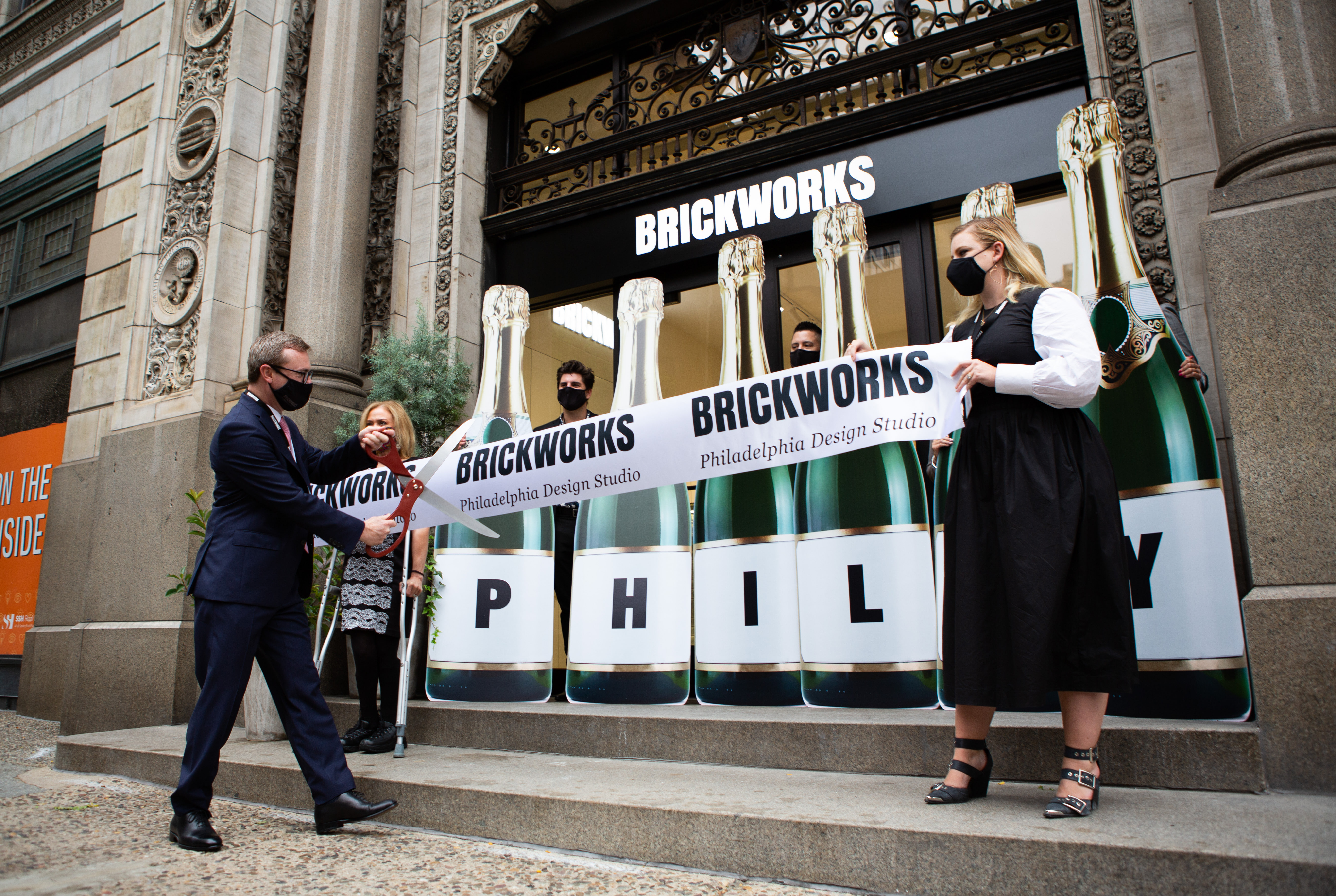
WYOMISSING, Pa. - September 29, 2020 - Philadelphia - Brickworks North America Corporation, the parent company of Glen-Gery Corporation, announced today the Grand Opening of its first North American Design Studio located in Philadelphia. This is Brickworks' seventh design studio, adding to the six located throughout Australia. The modern studio offers the architectural and design community a premium design experience where they can collaborate on projects, select from a broad product portfolio of high-end, stylish bricks, and host or attend industry and networking events.
"We're incredibly thrilled to debut our first North American Brickworks Design Studio in Philadelphia to meet the contemporary style needs of today's architects and designers," said Mark Ellenor, President, Brickworks North America. "An increasing number of design-focused professionals are choosing brick because of its limitless creative potential. Available in a variety of colors, textures, sizes, and shapes, brick is a multi-dimensional building material that can add history and personality to any project."
Located at 1319 Walnut Street, the new Philadelphia Design Studio is a stunning 3,500 square foot space on the first floor of the Witherspoon building, which is known for its distinctive architectural details. Architects, developers, and other trade professionals have endless design possibilities with both traditional brick products to modern, sleek color and high-end Venetian glass brick.
Inspired by Philadelphia's old-world charm, the retail space also features products that are synonymous with the city, including authentic handmade brick and Cushwa premium wood molded brick. The store's team of highly qualified staff will be led by Design Studio Manager Gia Scassera, who brings a background in interior design and building product experience. Scassera and her team will provide expert consultation to architects and consumers who are embarking on a new building or renovation projects. A leader in industry innovation, Brickworks will also host regular educational events and informative presentations at the design studio. Brian Yansak, Design Studio & Events Coordinator, will lead the events team where esteemed speakers will have the opportunity to educate and engage industry professionals about designing with brick.
In 2018, Brickworks Limited, the largest brick maker and one of the leading building material manufacturers in Australia, entered the North American brick market after acquiring Glen-Gery, the fourth largest brick maker in America.
Learn More and Request an Appointment
About Glen-Gery:
Glen-Gery Corporation, part of Brickworks Limited of Australia, is a premier brick and stone manufacturer offering the most diverse product portfolio of more than 700 brick and stone products. For more than a century, Glen-Gery has provided high quality building products that meet both innovative design challenges and demanding construction specification. Through technology advancements and product innovations, Glen-Gery delivers a premium product line that caters to the high-style needs of today's architects, designers, and homeowners. Founded in 1890, Glen-Gery is headquartered in Wyomissing, PA. www.glengery.com
About Brickworks Limited:
Brickworks Limited is a publicly limited Australian-owned company (ASX code: BKW), Australia's largest brick maker and one of that country's leading building products companies. Brickworks trace its history to 1934, today offering products including bricks, masonry blocks, retaining wall systems, pavers, roof tiles, precast concrete panels, timber products and more. The company distributes its products throughout Australia and New Zealand. Through Brickworks North America Corporation, Glen-Gery is the fourth largest brick manufacturer in the United States. www.brickworks.com.au
Pike and Rose
North Bethesda, MD
Architect
Lee RubensteinDistributor
Belair Road SupplyBrick breakdown
301,875 Napa Valley BricksProducts
Napa Valley VelourThe Henri apartment building occupies Block 6 of Federal Realty Investment Trust’s Pike & Rose development, a multi-phase mixed-use master plan within walking distance of the White Flint Metro Station in North Bethesda, Maryland. Prominently located along the neighborhood’s evolving main street near a central park, the design team was tasked with creating a building that would enhance the public realm and establish a standard of design for ongoing nearby development, while accommodating extensive residential and retail programmatic needs.
The architect Lee Rubenstein’s, goal was to deliver a masonry cavity wall facade that was at once richly detailed, constructible, and reasonably affordable. The idea of brick masonry was selected as the primary exterior material for the 12-story building, which offers a warm and approachable character with opportunities for ornament and detail.
A blend of hues from the Napa Valley brick were ultimately selected for depth and texture, in norman and modular sizes. These were paired with a host of 34 special shapes, which were used in a variety of configurations to give the facade it’s defining ornamental character. The resulting exterior expression successfully pairs detail-rich brickwork with a large format and inscribed panels, imbuing the building with an elevated level of ornamental interest, appreciable from a variety of perspectives and distances.
The Henri contains over 800 apartments and condos, numerous restaurants, a beer garden, many well-known retailers and a 30,000 square-foot sport and health center. This building focuses on a design that enhances both public and residential amenity. On the ground level are landscaped gathering areas where people want to stay longer after running an errand.
You May Also Be Interested In
We Can Help With Your Next Project
Discover the latest + greatest in design trends, industry news & pro tips from pros.
For all of your project needs, you’ll find everything you need at a Supply Center.
Let Us Know How We Can Help!
Glen-Gery’s Harmar Plant Changing Name to Align with Plant Improvements
Glen-Gery News
Glen-Gery’s Harmar Plant Changing Name to Align with Plant Improvements
WYOMISSING, Pa. – August 27, 2020 - Glen-Gery is committed to providing high quality products and superior customer service that position us as a leader in style and design. We continue to implement new processes and manufacturing technologies at all of our facilities to align with this commitment. To ensure this reputation is upheld in the marketplace, we are officially changing the name of our Harmar Plant to the Pittsburgh Plant. The management team at the Pittsburgh Plant has done a tremendous job making rapid changes to improve the quality of products and customer service. We invested heavily in our mining operations, building layered 6 month stock piles in red and cream burning clays to ensure color consistency between run to run and eliminating historical lime issues.
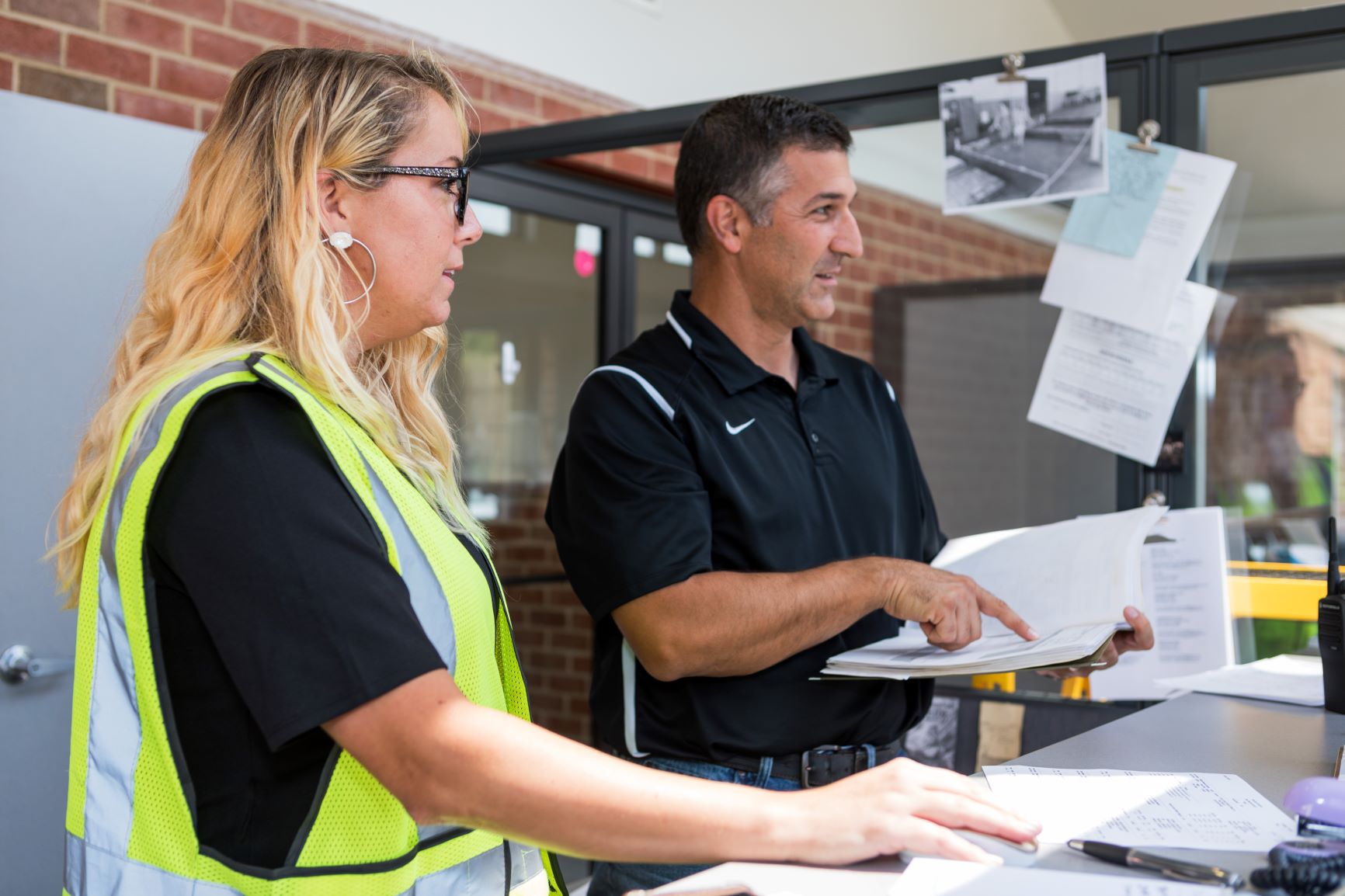
New Division Created at Mid-Atlantic Facility Called Value Added Plant
Glen-Gery News
New Division Created at Mid-Atlantic Facility Called Value Added Plant (VAP)
WYOMISSING, Pa. – August 21, 2020 - Glen-Gery has created a new division, located at the Mid-Atlantic facility, called the Value Added Plant (VAP) to centralize valuable services and streamline processes for key products. VAP will lead initiatives such as thin brick cutting and waxing, tumbling, Tru-Brix grooving and type 1 and 2 samples for Mid-Atlantic, York and Pittsburgh plants. This department also supports the distribution of mortar, Feldhaus, Tru-Brix, Thin Tech, Terracade and the International Collection products. By placing these products and services under one umbrella, it will allow us to focus on creating efficiencies and improving customer service.
Meet the VAP Team:
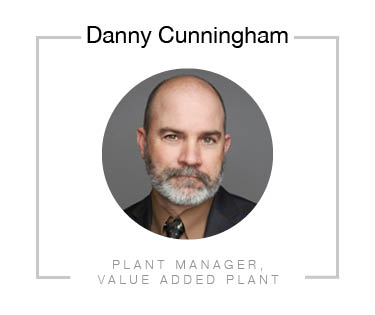
|
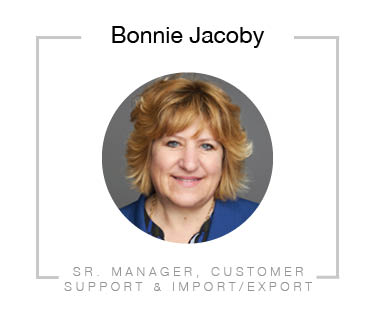
|
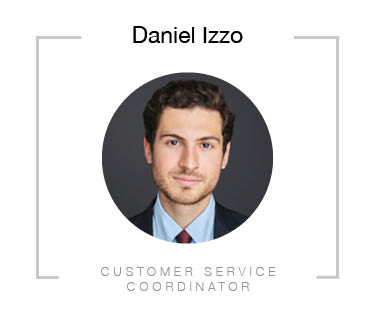
|
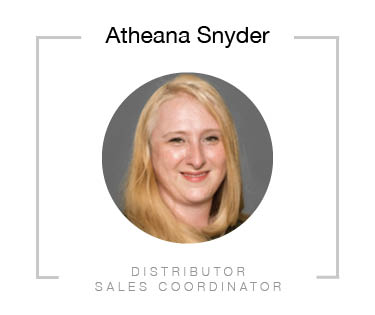
|
Danny Cunningham - Plant Manager, Value Added Plant
Previously Plant Manager for Cushwa, Danny brings a wealth of knowledge and experience to the Value Added plant. In March, Danny accepted the position of Manager, Cutting Operations. Over the past several months, Danny has worked to transfer and establish cutting and other manufacturing processes at the Mid-Atlantic location.
Danny has worked in the brick industry for 33 years and his number one focus is providing customers with a quality product. In his spare time, Danny enjoys working on old cars and building things. Danny is excited to take on this new opportunity and continue to help bring unique solutions to customers to make their projects stand out.
Bonnie Jacoby - Senior Manager, Customer Support & Import/Export
Bonnie Jacoby will temporarily lead the customer service team as acting Distribution Manager at VAP in addition to her role managing customer support and imports for Glen-Gery. Bonnie has been with Glen-Gery for 39 years in varying customer service and management roles making her extremely knowledgeable in all facets of our business.
Bonnie enjoys reading and shopping in her spare time and is always in search for a great pair of shoes. She has built many relationships with our customers over the years and looks forward to building on them as part of the newly created VAP team.
Daniel Izzo - Customer Service Coordinator
Daniel Izzo is part of the customer service team at the Value Added plant. Daniel joined Glen-Gery in March after previously working as a customer service representative for Vanguard Group. He has quickly learned the business and has become a valuable resource to both internal and external customers.
In addition to learning the brick business, Daniel likes to golf and sew. He has two brothers and enjoys spending time at the beach in the summer. Daniel is looking forward to learning more about the brick industry as well as educating our customers on the products distributed from VAP.
Athena Snyder - Distributor Sales Coordinator
Atheana Snyder has been helping Glen-Gery customers for 6 years as part of the Mid-Atlantic plant customer service team and will now join the value added plant customer service team. Atheana brings experience and knowledge on products such as thin tech, mortar and the International Collection as these were previously handled through the Mid-Atlantic Plant.
Atheana started helping customers at age 14 while working in her grandparent’s greenhouse. She enjoys helping customers learn more about our products and providing solutions to make it easier to do business with Glen-Gery. Atheana is active outside of work, spending time with her two daughters, cooking, hunting, hiking, fishing, crafting, paintballing, and camping.
Request a Seminar
Request A Seminar
To request a Glen-Gery seminar, click the links below for additional details about each topic, and email events@glengery.com to schedule.
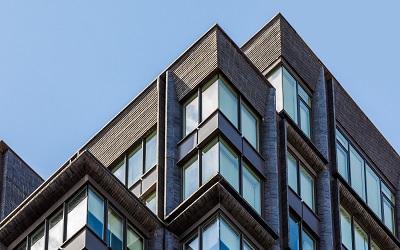
Adding Interest With Brick Shapes
|
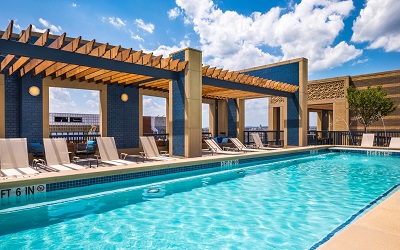
Aesthetics & Performance Capabilities Of Glazed Brick
|
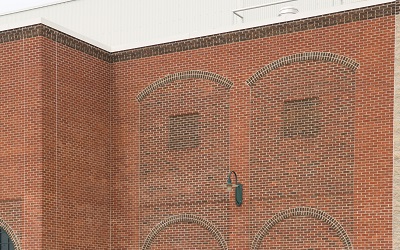
Avoiding Cracks In Brickwork
|
|---|---|---|
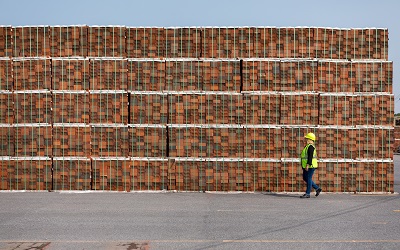
|
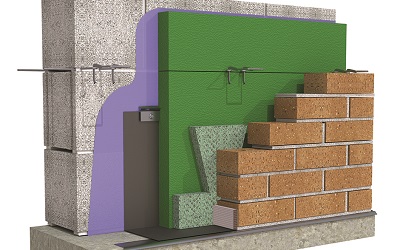
|
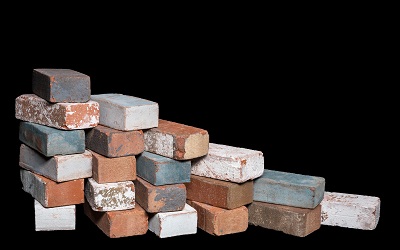
|
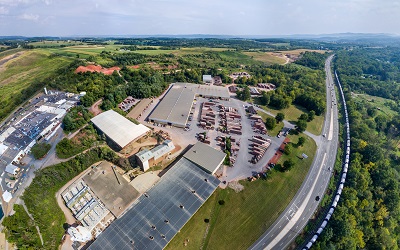
|
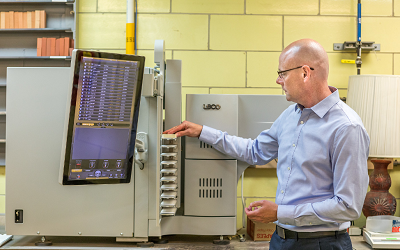
|
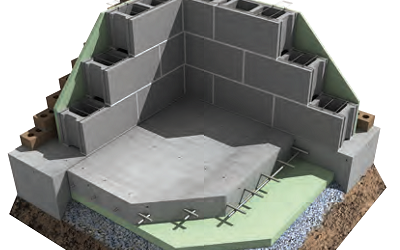
|
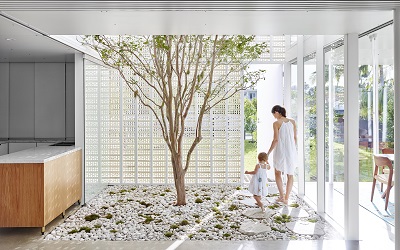
|

|
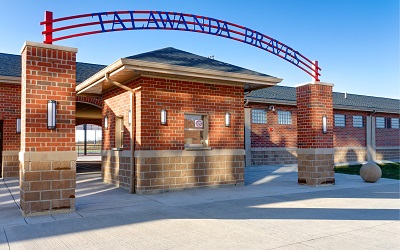
|
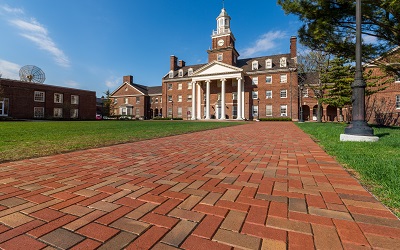
|
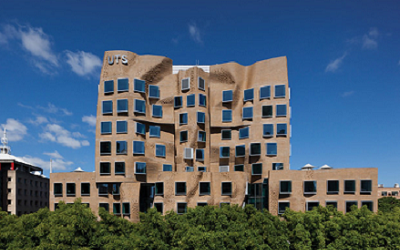
|
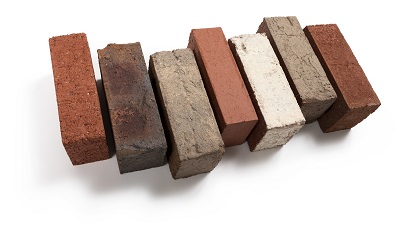
|
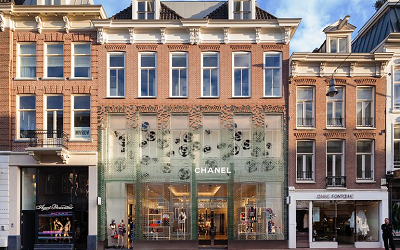
|
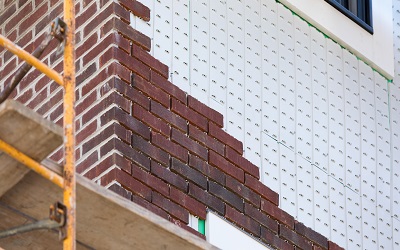
|
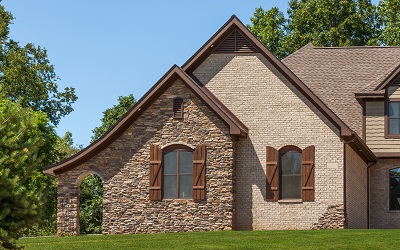
|
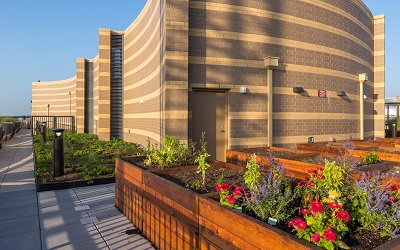
|
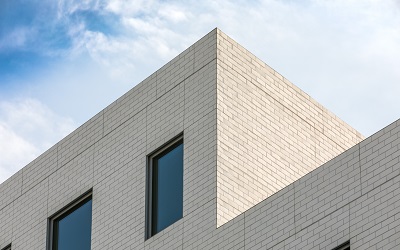
|
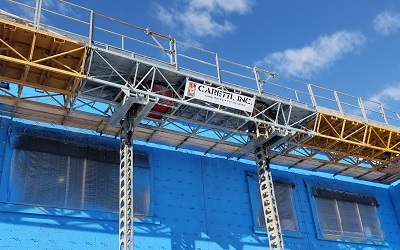
|